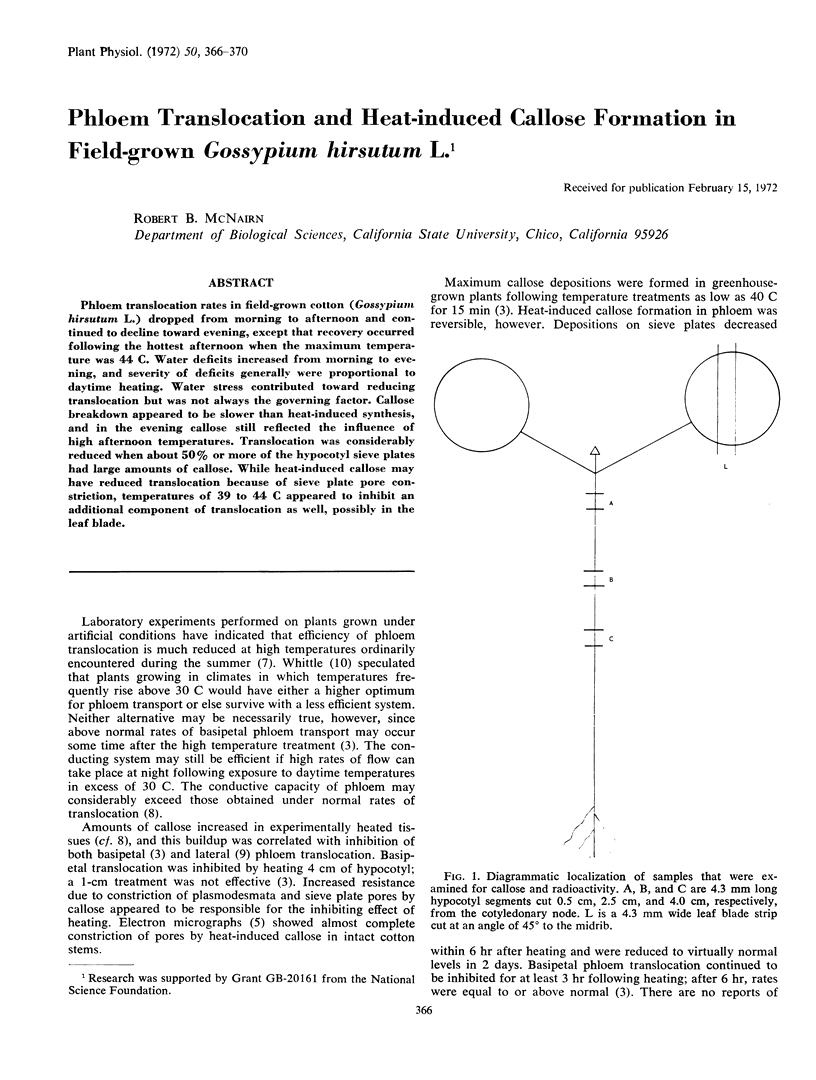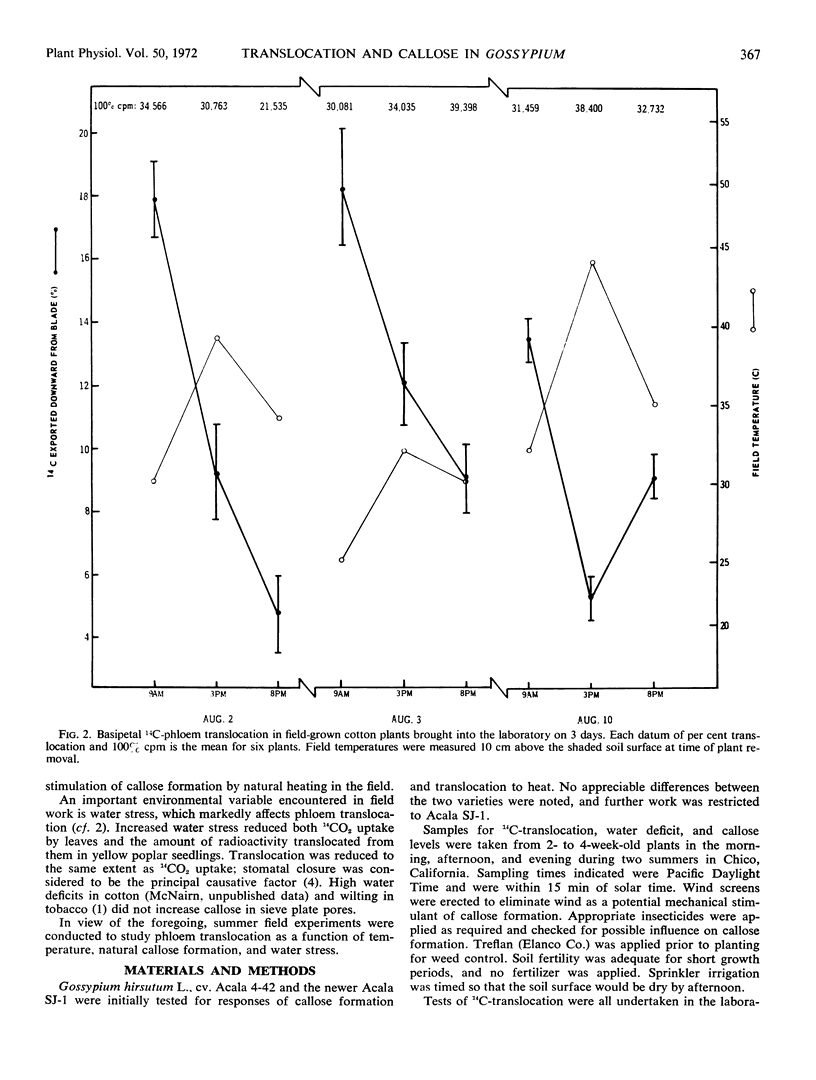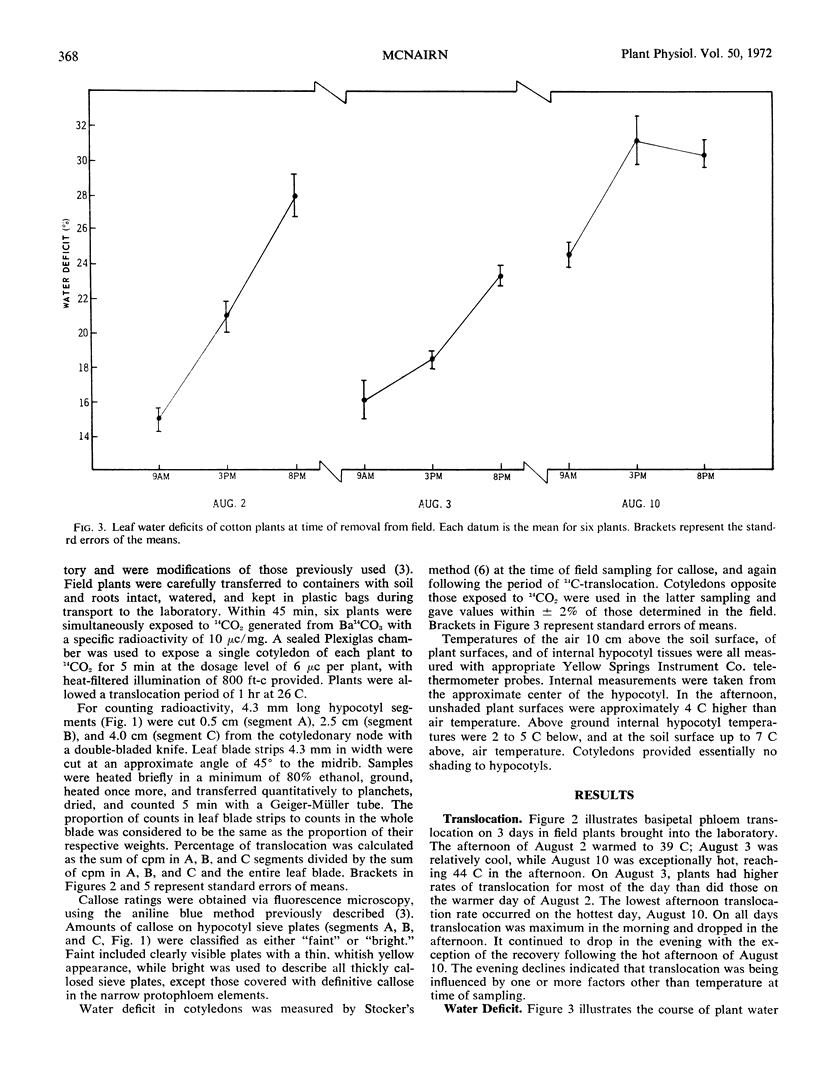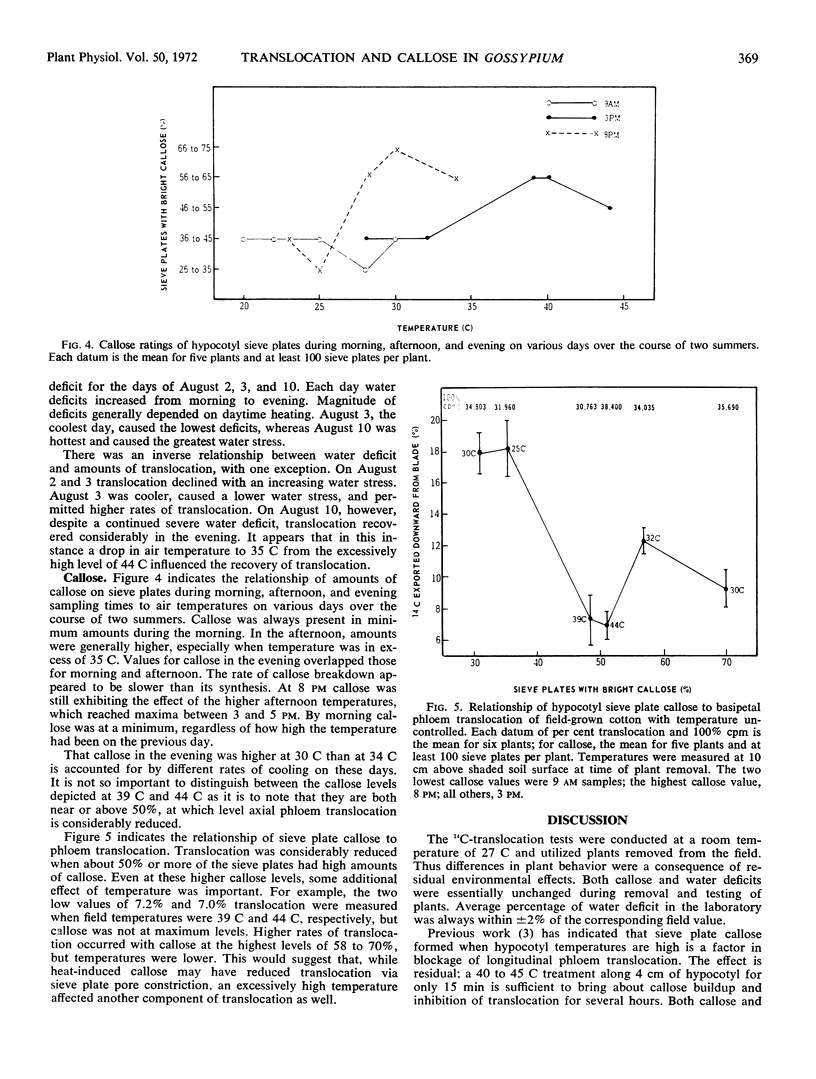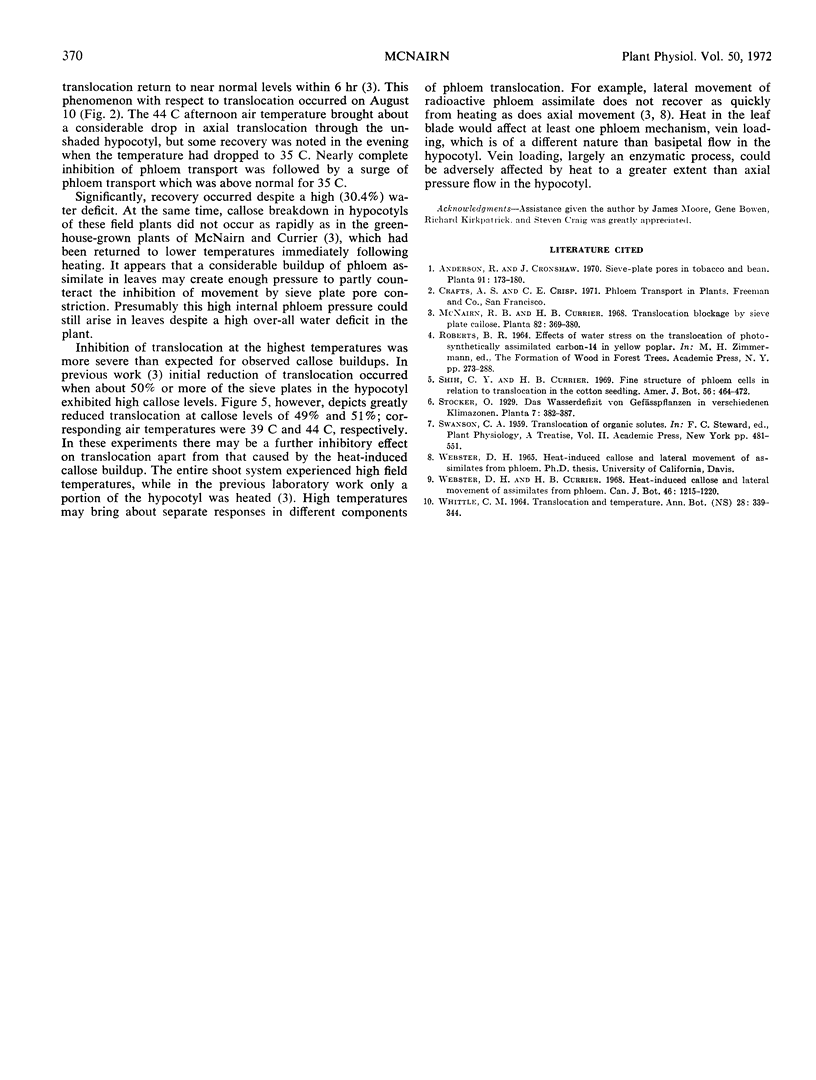Abstract
Phloem translocation rates in field-grown cotton (Gossypium hirsutum L.) dropped from morning to afternoon and continued to decline toward evening, except that recovery occurred following the hottest afternoon when the maximum temperature was 44 C. Water deficits increased from morning to evening, and severity of deficits generally were proportional to daytime heating. Water stress contributed toward reducing translocation but was not always the governing factor. Callose breakdown appeared to be slower than heat-induced synthesis, and in the evening callose still reflected the influence of high afternoon temperatures. Translocation was considerably reduced when about 50% or more of the hypocotyl sieve plates had large amounts of callose. While heat-induced callose may have reduced translocation because of sieve plate pore constriction, temperatures of 39 to 44 C appeared to inhibit an additional component of translocation as well, possibly in the leaf blade.
Full text
PDF